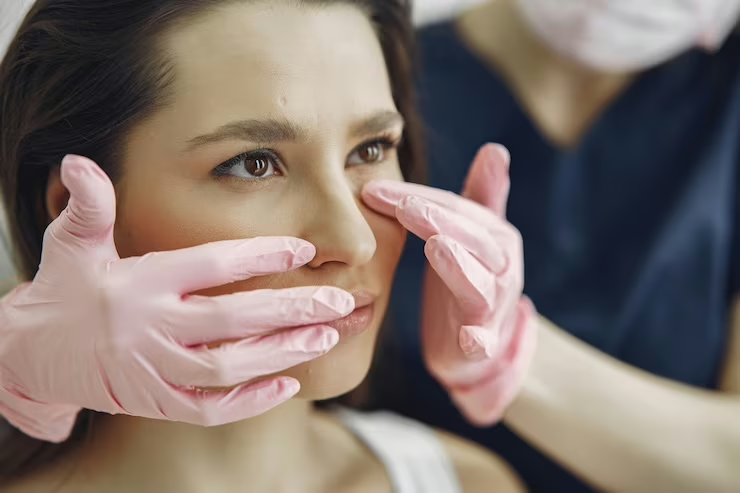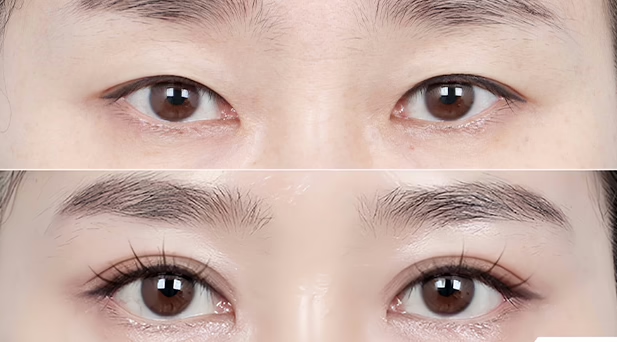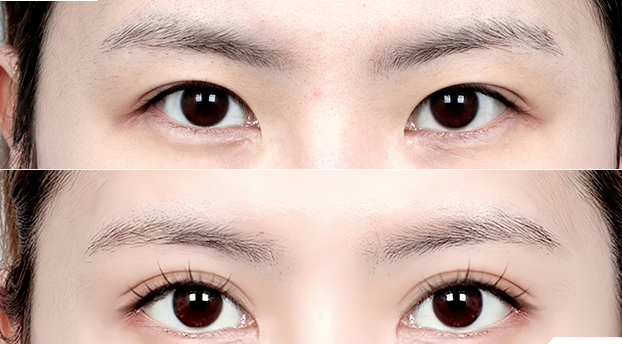Eyelid Surgery 7 Transformative Benefits of You Need to Know

Table of Contents
Double eyelid surgery, medically known as Asian blepharoplasty, is one of the most popular cosmetic procedures worldwide. It creates a defined crease in the upper eyelid, transforming the eye’s appearance by making it look larger, brighter, and more alert. This surgery is especially common among individuals with monolids or minimal eyelid folds who desire a natural, double eyelid crease.
Whether you’re considering this surgery for aesthetic reasons or to address functional issues such as droopy eyelids, this guide will walk you through everything you need to know—from the different types of eyelid surgeries to the benefits, techniques, risks, and recovery.
What Is Double Eyelid Surgery?
Double eyelid surgery involves creating a crease in the upper eyelid that wasn’t naturally present or enhancing an existing one to make the eyes appear more open and defined. The eyelid crease is the fold of skin that separates the movable eyelid from the area above it. In people with monolids, this crease is absent or poorly defined, which can make the eyes appear smaller or less expressive.
This surgery can significantly impact the overall facial aesthetics, balancing features and enhancing eye shape to create a youthful, refreshed look.
The Anatomy of the Eyelid: Why the Crease Matters
To understand double eyelid surgery, it helps to know the basic anatomy of the eyelid. The eyelid consists of several layers: skin, muscle, fat, and conjunctiva. The crease forms where the levator muscle’s tendon attaches to the skin, allowing the eyelid to fold naturally when the eyes open.

Variations in this attachment or the amount of fat and skin can result in different eyelid types, such as:
- Monolid: No visible crease.
- Single fold: A faint or shallow crease.
- Double fold: A well-defined crease.
Surgery works by creating or enhancing this crease to improve eyelid definition.
Types of Eyelid Surgery
Eyelid surgery covers a wide range of procedures designed to improve both upper and lower eyelid aesthetics and function. Here are the most common types related to double eyelid surgery and other eyelid concerns:
1. Double Eyelid Surgery
This is the primary procedure aimed at creating a crease in the upper eyelid. There are several styles and techniques, allowing customization based on individual preferences and anatomy.
- Crease Styles:
- Parallel crease runs parallel to the lash line, giving a more dramatic and defined look.
- Tapered crease tapers towards the inner corner, creating a natural and subtle effect.
- Natural fold mimics the natural eyelid crease shape for a more authentic appearance.
- Customization: Surgeons tailor the crease height, width, and shape to harmonize with the patient’s face shape, ethnicity, and aesthetic goals.
2. Upper Blepharoplasty
This surgery removes excess skin, fat, and muscle from the upper eyelids. It is often performed to correct drooping eyelids (ptosis) or to reduce hooding, which can affect vision and appearance.
- Surgical Process: The surgeon makes an incision along the natural eyelid crease, removes excess tissue, and tightens the area to rejuvenate the eyelid.
- Benefits: It restores a youthful, alert look and can improve peripheral vision obstructed by sagging skin.
3. Lower Blepharoplasty
Focusing on the lower eyelids, this procedure treats puffiness, bags, and sagging skin.
- Techniques:
- Transcutaneous approach involves an external incision below the lash line for skin tightening and fat removal.
- Transconjunctival approach accesses fat pockets through the inner eyelid, leaving no visible scars.
- Additional Options: Fat repositioning or grafting can restore volume and smooth hollows under the eyes.
4. Epicanthoplasty
This surgery modifies the epicanthal fold—the skin fold at the inner corner of the eyes common among East Asians. It opens up the eyes by removing or reshaping this fold.
- Often combined with double eyelid surgery for enhanced eye openness and balance.
5. Canthoplasty
Canthoplasty reshapes the outer corner (lateral canthus) of the eyes to create an almond-shaped, lifted appearance.
- Canthoplasty lengthens or lifts the outer eye, correcting drooping or downward slanting eyes.
- Canthopexy is a less invasive alternative that tightens the outer eye corner without major reshaping.
6. Ptosis Repair
Ptosis is a condition where the upper eyelid droops due to muscle weakness or nerve damage.
- This procedure lifts the eyelid by tightening or reattaching the levator muscle, often combined with double eyelid surgery to improve both function and appearance.
7. Fat Repositioning or Removal
The distribution of fat around the eyelids affects eye contour and aging appearance.
- Fat removal reduces puffiness.
- Fat grafting or repositioning fills in hollows or smooths contours for a youthful look.
- Microfat and nanofat grafting offer refined techniques for natural results.

Surgical Techniques for Double Eyelid Surgery
Incisional Method
The incisional technique involves making an incision along the planned eyelid crease. This allows removal of excess skin, fat, and muscle, and precise formation of a permanent crease.
- Pros: Permanent results, effective for patients with thick skin or excess fat.
- Cons: Longer recovery, more noticeable initial swelling.
Non-Incisional Method (Suture Technique)
Instead of cutting, this technique uses sutures to create a crease by connecting the eyelid skin to the underlying muscle.
- Pros: Minimally invasive, shorter recovery, less scarring.
- Cons: Results may be less durable, suited for patients with thin skin and minimal fat.
Combination Techniques
For complex cases, surgeons may combine both methods or add ptosis repair, fat repositioning, or canthoplasty to enhance results.

Benefits of Double Eyelid Surgery
- Enhanced Eye Definition: Creates clear, symmetrical creases that highlight the eyes.
- Improved Eye Shape: Makes eyes appear larger, more open, and youthful.
- Increased Confidence: Many patients experience a boost in self-esteem and satisfaction with their appearance.
- Functional Improvements: Corrects sagging skin that may obstruct vision or cause discomfort.
- Customization: Tailored to suit each individual’s unique facial features and preferences.
- Long-Lasting Results: Especially with the incisional method, results can last for many years.
- Anti-Aging Effects: Reduces signs of aging like drooping eyelids and puffiness.
Risks and Complications
As with any surgery, potential risks include:
- Swelling, bruising, and temporary discomfort
- Infection if aftercare is inadequate
- Scarring, which is typically minimal and fades over time
- Asymmetry, which can be corrected if needed
- Difficulty closing eyes fully in rare cases
- Temporary blurred vision or dry eyes
Choosing a board-certified surgeon and following all pre- and post-operative instructions greatly reduces these risks.
Recovery Process
- First Week: Expect swelling and bruising; cold compresses help reduce these. Sutures may be removed after 5-7 days.
- Weeks 2-4: Swelling continues to decrease, and most patients return to normal activities. Avoid strenuous exercise.
- Months 1-3: Final results become more apparent as scars mature and tissues settle.
Proper hygiene, medication adherence, and follow-up visits are essential for a smooth recovery.
Choosing the Right Surgeon and Clinic
Looking for the right surgeon or clinic? Look no further then Dicarat, we offer the best help and customize based on your preferences. With the best surgeons and nurses on our team, your guaranteed our best. Contact us today on our website here, or here in Korean.
Conclusion
Double eyelid surgery is a transformative procedure that can enhance your natural beauty and improve both aesthetics and function. With various techniques and types of eyelid surgeries available, it’s essential to consult with an experienced surgeon who can customize the approach to your unique needs.
By understanding the options, benefits, and recovery involved, you can make an informed decision and achieve beautiful, natural-looking results that last a lifetime. Make sure to contact us for more information and questions!